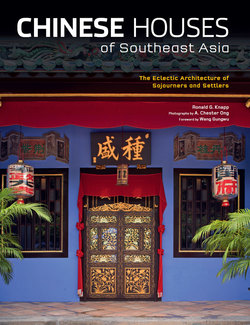Читать книгу Chinese Houses of Southeast Asia - Ronald G. Knapp - Страница 13
ОглавлениеCHEE JIN SIEW HOME
MALACCA, MALAYSIA
Mid-19th Century
Details of the painted scrolls above the façade windows that include not only paintings of birds and flowers but also two pairs of characters meaning “Bright Mountains, Beautiful Waters,” a phrase commonly used in fengshui to indicate a favorable site.
The façades of townhouses lining both sides of Heeren Street remain a gallery of Malacca’s early twentieth-century élite. Parallel Jonker Street, on the other hand, once known for its mixed uses—gilded clan halls, a school and a theater, and an array of shophouses selling traditional as well as more modern goods—has undergone a metamorphosis. Today, many of the old structures are gone and replaced by venues such as cafés, pubs, and souvenir shops catering to the mass of tourists who flock to Jonker Walk, a rebranded nighttime bazaar launched by the city government. “Since 2000 Jonker Street has reeled under repeated assault: the depletion of a traditional resident community, in which the Straits Chinese are now reduced to a single family; the eviction of established traders and the demolition of their premises; the decay of heritage structures amid new campaigns designed to lure the indiscriminate tourist; the encouragement of more outlets peddling kitsch that already bristles along the road; and the sanctioning of yet more projects that misrepresent the street’s historic fabric. All have cost Jonker Street its soul” (Lim and Jorge, 2005: 80). Indeed, many who are concerned with the authentic representation of Malacca’s heritage have been saddened by this makeover. It is somewhat ironic that the English translation for Jonkerstraat, the original Dutch name for Jonker Street, is Nobleman’s Street.
